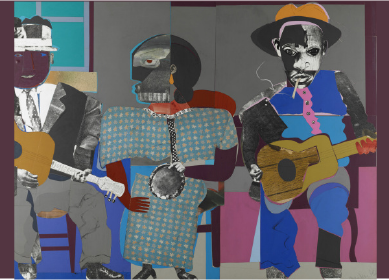An anthem is a piece of choral music set to a biblical text in English. The musical form developed in the sixteenth century as a response to the establishment of the Reformation Church in England. Discussing the origins of the anthem, and its subsequent evolution in the hands of prominent English composers, highlights precisely how the Bible was interpreted and represented throughout Reformation England.
How Did the Anthem Develop?
In 1534 CE, King Henry VIII separated the Church of England from the Roman Catholic Church. This break changed the way Christianity was practiced in England. The use of Latin in services was abolished, and in 1549 the use of English-texted prayer books in churches was enforced by law. Church composers were thus required to replace motets, the Latin-texted choral music from the Roman Catholic tradition, with an English alternative.
The musical style of the sixteenth-century anthem exemplifies the central tenet of the Reformation: the centrality of Scripture and its accessibility to believers. Anthems had a simple setting of a short text sung in unison. Psalms were popular among anthem composers, though passages from biblical chapters and English prayer books were also used. Comprehension of biblical texts by congregations across England was paramount, and composers supported this aesthetic shift by paring down the harmony so that listeners could focus on the text. Anthems do not wholly define Reformation sacred music in England, but they played a pivotal role in the musical development of the new church.
Who Were Prominent Anthem Composers?
Perhaps the most authoritative of the Reformation-era composers were Thomas Tallis (1505–1585) and William Byrd (ca. 1540–1623). Both worked for the royal court and its chapel, among other places, and were even granted a music printing monopoly by Queen Elizabeth I in 1575. As such, the collective output of Tallis and Byrd demonstrates how the anthem evolved in some of England’s most influential religious spaces. One of Tallis’s most popular works is If ye love me, a four-voice anthem that appeared in the earliest surviving collection of English sacred music (Wanley Partbooks, 1547–1548). Its text is an English translation of John 14:15–17 and was likely sourced from the 1539 “Great Bible,” or the first Bible in English authorized for use by King Henry VIII. The choice in text was likely twofold: use of John 14 was liturgically flexible enough to be sung during much of the newly established calendar, and Jesus’s promise of an advocate was easy to communicate in a musically rich anthem. An exceptional example of Byrd’s composition is the anthem Hear my prayer, written for five voices. This anthem includes instrumental music and solo singing, two developments of the genre that further exemplified the desire for textual comprehension. A solo singer performed verses of sacred text with instrumental accompaniment, and the choir sang the same text as a short response. This repetition in both solo and choral sections led to a deeper comprehension of the biblical passage, in this case Ps 143:1–2, in which the psalmist cries out for God’s help. Harmonic dissonance in the opening verse exemplifies the impassioned call to God from the longing, mortal sinner. This sentiment is reflected again later in the anthem: “I stretch forth my hands unto thee: my soul gaspeth unto thee as a thirsty land” (Ps 143:6).
Image Credit: A page of Thomas Tallis’s anthem “If ye love me” as written out in “The Wanley Partbooks.” Mid-16th century, paper and ink. Photo courtesy of Bodleian Libraries, University of Oxford.
Bibliography
- McCarthy, Kerry. Byrd. Oxford: Oxford University Press, 2013.
- McCarthy, Kerry. Tallis. Oxford: Oxford University Press, 2020.
- Temperley, Nicholas. “Anglican and Episcopalian Church Music.” Grove Music Online. 2001. https://www.oxfordmusiconline.com/grovemusic/view/10.1093/gmo/9781561592630.001.0001/omo-9781561592630-e-0000046765.




